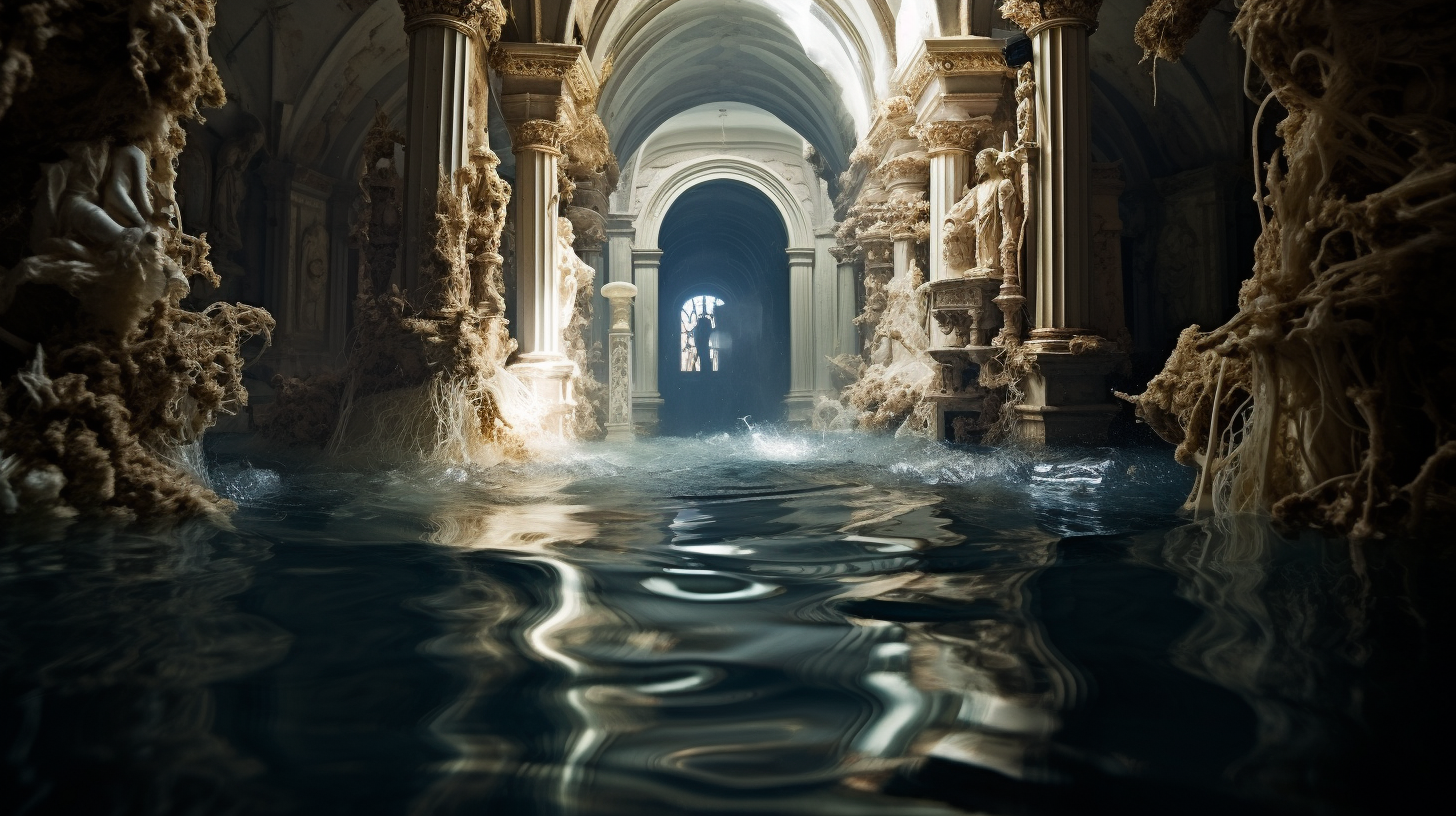In the shadow of devastating climate chaos, humanity’s most solemn shrines and sanctuaries surrender to the relentless tides. Resilient as spirit may be, our cherished symbols etch sorrowful vignettes beneath the encroaching waves. In this chapter of Green Dystopia, the fates of flooded religious landmarks narrate a tale of the dispossessed divine in a subaqueous realm – where steeples bow to the sea and prayers are swallowed by the surge.
The significance of such sanctified spaces extends beyond the metaphysical; they are cornerstones of communities, vehicles of history. Yet, there they lay—partially veiled by raucous billows, their grandeur gasping amidst the detritus flotsam. We view them now, through lens of despair, monuments of a different epoch when faith stood with feet dry and firm upon the earth.
The Minarets Beneath – In the archipelagic enclave of Jakarta, once the Istiqlal Mosque towered with dignity. The whispers of prayers that would dance amongst its lofty minarets are now silent, the echoes lie with the fishes that thread through marble arches. Experts postulate – is this Atlantis reimagined? A world where faith must swim, not stroll, to its sanctum?
Paris Underwater – The River Seine, erstwhile lifeline of Paris, now clasps the city in a watery embrace. Notre-Dame, ever the vigilant guardian, once graced skyline views now resonates with the languid laps of tide against its water-worn stones. A revered emblem of Gothic architecture, mourned by Parisians and pilgrims alike – its flying buttresses now support a different congregation; that of algae, and the patrolling pike.
Pilgrimage Submerged – Along the Ganges, the holy city of Varanasi finds itself reconciling with an alien fate – the riverbanks are no more, the ghats subject to the aquatic abyss. Devout souls still venture, not by foot but by frail craft, to perform sanctified rituals in the inundated lap of this parched mother river. ‘Kashi is underwater,’ echoes the local adage, yet her essence remains buoyant in the hearts of the unwavering faithful.
The sheer force of nature’s reckoning can flicker out the physical, but not the metaphysical. Spiritual defiance against the maelstrom; makeshift altars erected on surviving rooftops, psalms sung to the rhythm of rain on corrugated shelters—the fervency of faith outlasts ruin.
Displaced Devotion – The quandaries these sanctuaries shape are manifold; experts muse on preservation, on the tribulations of keeping history afloat. Should these relics be salvaged and reconstructed on drier lands, or be preserved in situ as poignant symbols of the deluge? The conversation between heritage conservationists and climate realists spirals, much like the waters that have encapsulated these shrines.
Enmeshed within the chronicles of climate calamity, these once-stolid structures glimpse at us through the murky depths, dubbing the question of reverence versus survival. We have seen, with our own somber eyes, the burgeoning cities beneath the waves – their inhabitants still cling to semblance of normalcy, harvesting hope where despair inundates.
Fragmented Faith – Mourning what once was, the disparate faithful of our drowned world seek solace in fragmented relics. ‘Sacred spaces,’ one theologian reflects, ‘are more than just coordinates; they are cradles of the soul – and souls need no dry land.’ The pervasiveness of hope in these submerged bastions of belief is testament—humanity, it seems, is both deeply vulnerable and vehemently valiant.
As our world weathers this storm, our commitment to narrative becomes essential. We recount, with a sense of urgency, the stories of these sanctuaries—enshrined now in the annals of the aqueous. For these temples, mosques, and cathedrals are more than structures; they are stories, submerged, reverberating through the waters – a siren song calling for reflection on what we, as a civilization, hold sacred in the face of our green dystopia.
